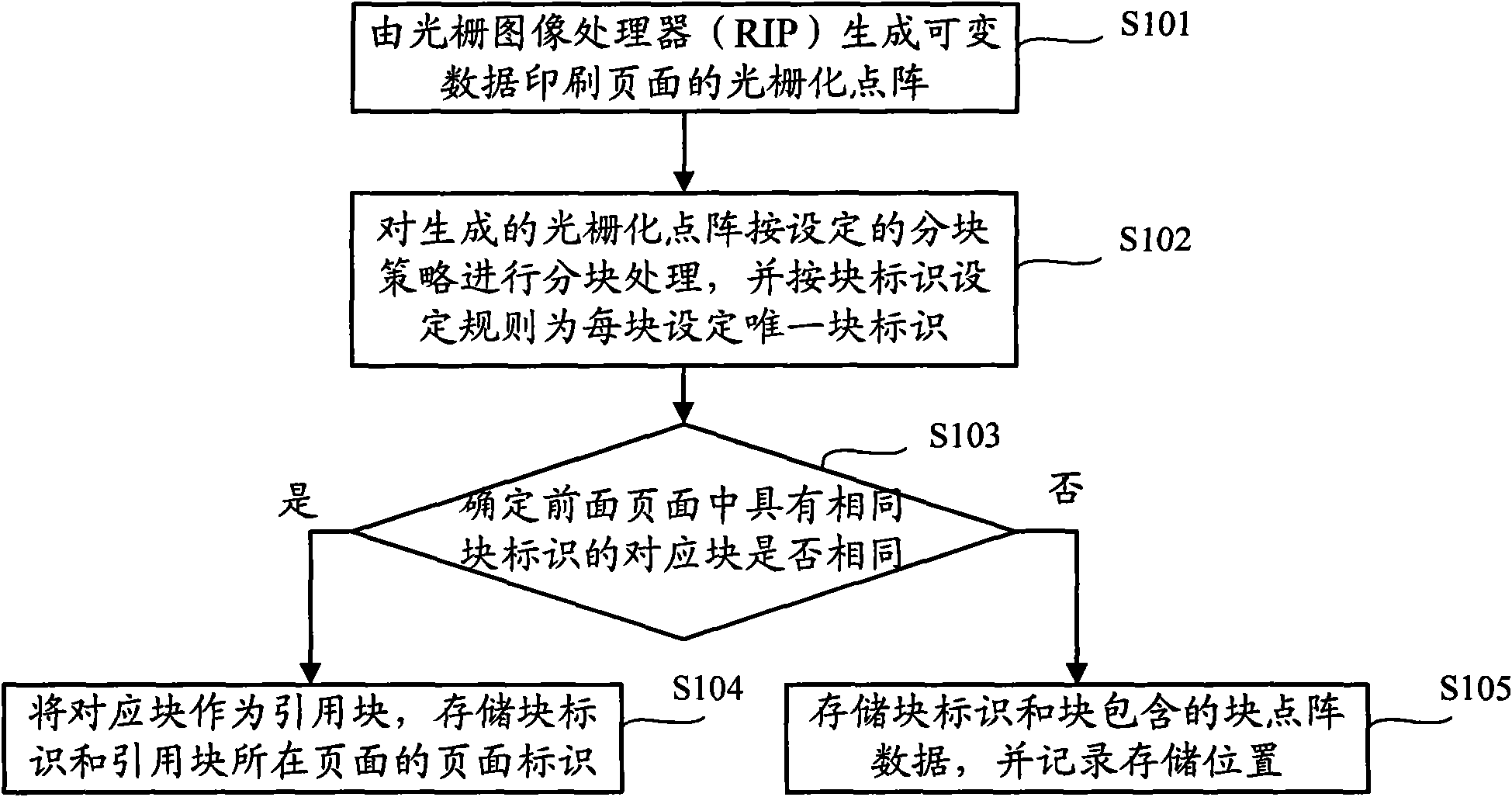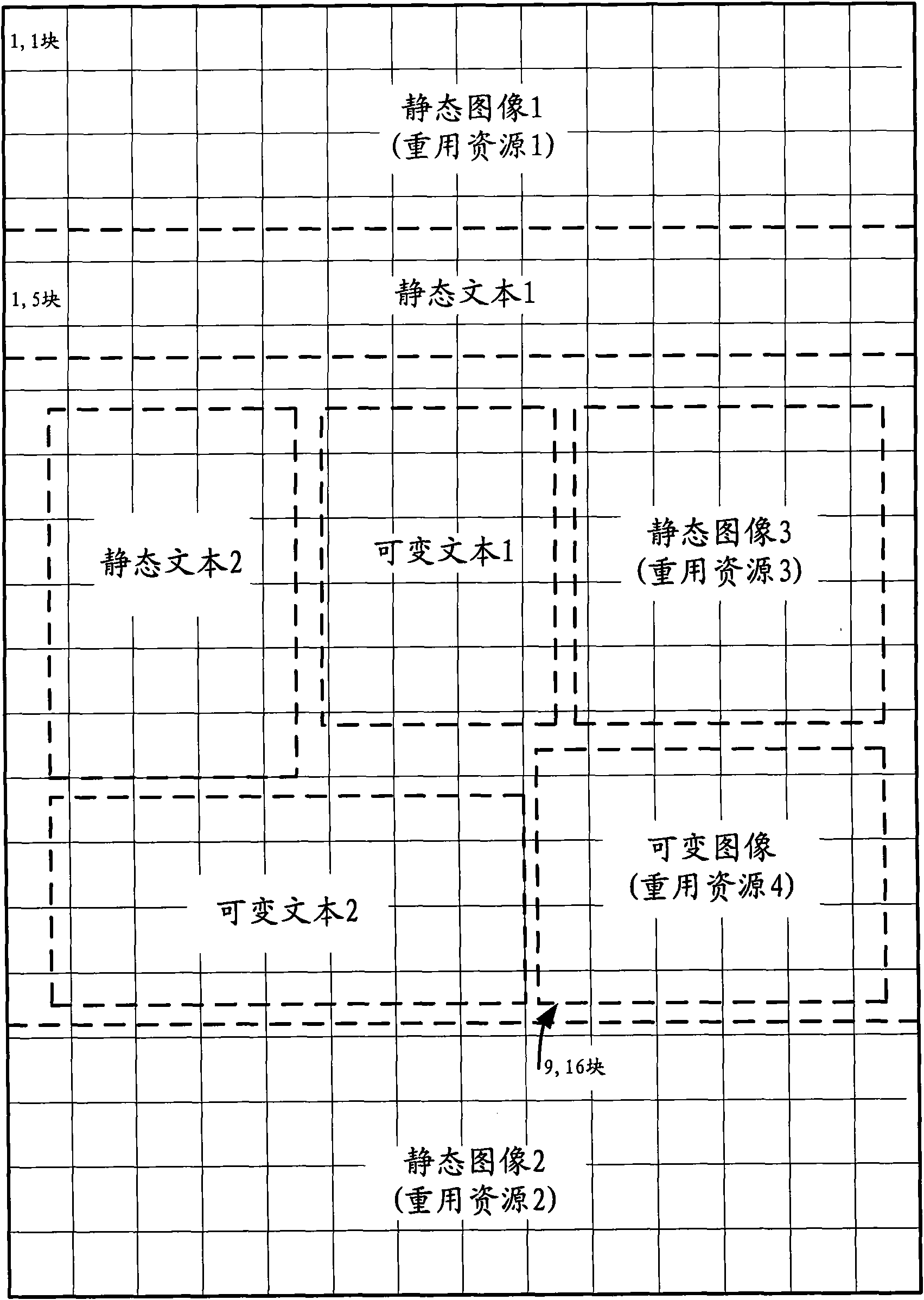Storing method of rasterization lattice of variable data printed page
A rasterization and page technology, applied in image memory management and other directions, can solve the problems of fast printing of variable data, large storage space, consumption, etc., to reduce the amount of dot matrix data storage, save disk space and cost, and improve Effects of storage and access speed
- Summary
- Abstract
- Description
- Claims
- Application Information
AI Technical Summary
Problems solved by technology
Method used
Image
Examples
Embodiment 1
[0039] Embodiment 1 An application for processing PS jobs from a VDP application, including rasterization processing, rasterization lattice partitioning, recognition reuse, compression, storage and other processes. Since the general PS description does not define element reusability, even if the same image is placed in the same position on the first page and the second or subsequent pages, PS will describe the image data separately in the description of each page instead of referencing the same image data, so it is difficult for the RIP rasterization process to identify which elements are to be reused. In order to reduce the repeated compression and storage of the same rasterized dot matrix data, the method for storing the rasterized dot matrix of the variable data printing page provided by the present invention is used to process the PS operation of the VDP application. The specific process is as follows:
[0040] 1. Submit the PS job of the VDP application to the RIP.
[00...
Embodiment 2
[0055] Embodiment 2 processes the PDF job from the VDP application, including rasterization processing, rasterization lattice partitioning, recognition reuse, compression, storage and other processes. In a PDF document, an image is generally defined as a resource and has a unique PDF object ID (Object Identifier). Therefore, when the same image is used multiple times, the image bitmap data will not be described repeatedly each time it is used. Citation description. In the process of parsing the content of the page, when RIP encounters an image primitive, it determines and assigns a unique reuse object ID according to its PDF object ID, current coordinate transformation matrix (CTM) and clipping (Clip), and adds this information to to the list of job-level reusable resources. If the PDF object ID, current coordinate transformation matrix (CTM) and clipping (Clip) of the currently processed image already exist in the reusable resource list, they will not be added repeatedly, an...
Embodiment 3
[0076] Embodiment 3 processes PPML / VDX jobs from VDP applications, including rasterization processing, rasterization lattice partitioning, recognition reuse, compression, storage and other processes. In traditional PS and PDF documents, there is generally no explicit definition of which elements are reusable, but in PPML / VDX documents, those graphics elements that are reused many times are explicitly defined as reusable elements. Although in figure 2 The static text 1 in the variable data page template shown in the table is a constant data element and can be reused. However, if the VDP job applying this template generates a PDF, the content of the static text 1 will generally be repeatedly described in the content flow of each page, so Reuse content cannot be identified without a final rasterized bitmap comparison. And if PPML / VDX is generated, static text 1 will be defined as a reuse object (REUSABLE_OBJECT), and its content will only be described once. In this way, the bl...
PUM
 Login to View More
Login to View More Abstract
Description
Claims
Application Information
 Login to View More
Login to View More - R&D
- Intellectual Property
- Life Sciences
- Materials
- Tech Scout
- Unparalleled Data Quality
- Higher Quality Content
- 60% Fewer Hallucinations
Browse by: Latest US Patents, China's latest patents, Technical Efficacy Thesaurus, Application Domain, Technology Topic, Popular Technical Reports.
© 2025 PatSnap. All rights reserved.Legal|Privacy policy|Modern Slavery Act Transparency Statement|Sitemap|About US| Contact US: help@patsnap.com



